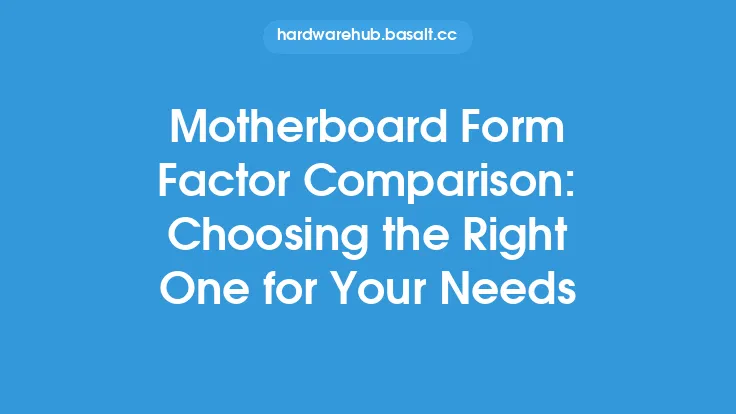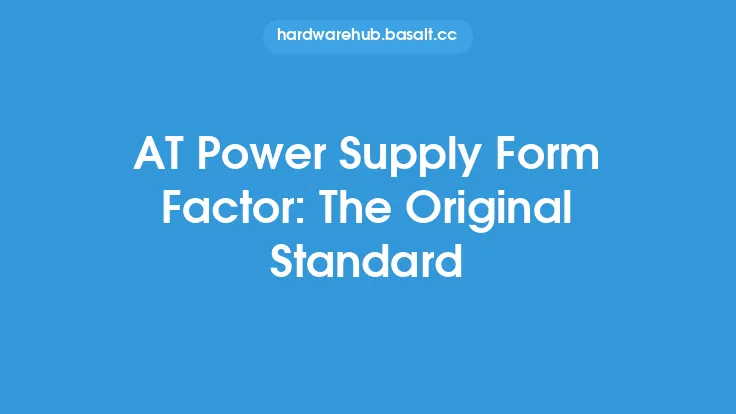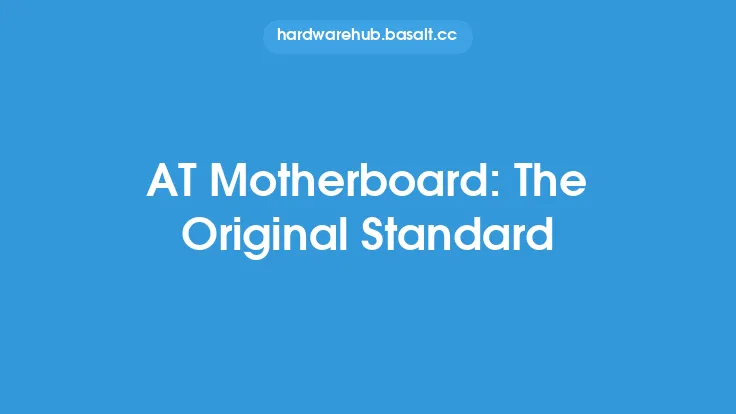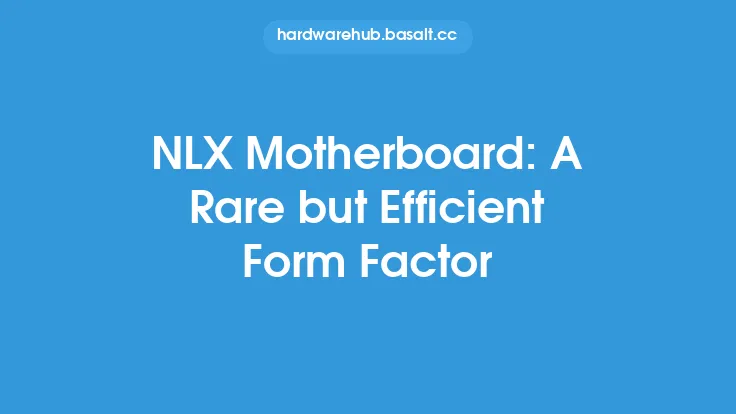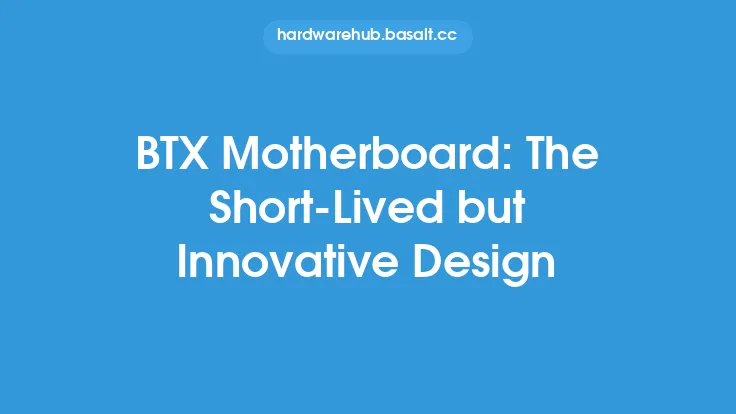The Baby AT motherboard form factor was introduced in the late 1980s as a smaller alternative to the full-size AT motherboard. It was designed to provide a more compact and efficient solution for system builders, while still maintaining compatibility with the existing AT standard. The Baby AT form factor was widely adopted in the early 1990s and remained a popular choice for many years, playing a significant role in shaping the development of modern motherboard form factors.
Introduction to Baby AT Motherboard
The Baby AT motherboard measures 8.57 inches (21.7 cm) wide and 10.45 inches (26.5 cm) deep, making it significantly smaller than the full-size AT motherboard, which measures 12 inches (30.5 cm) wide and 13.8 inches (35.1 cm) deep. Despite its smaller size, the Baby AT motherboard retained the same functionality and features as its larger counterpart, including support for the same range of processors, memory, and expansion cards. The Baby AT form factor was designed to be backward compatible with existing AT systems, allowing users to upgrade their systems without having to replace the entire motherboard.
Key Features of Baby AT Motherboard
The Baby AT motherboard has several key features that contributed to its popularity. One of the most significant advantages of the Baby AT form factor is its compact size, which made it ideal for use in smaller systems, such as desktops and home computers. The Baby AT motherboard also retained the same expansion capabilities as the full-size AT motherboard, including support for multiple ISA expansion cards and a range of processor options. Additionally, the Baby AT form factor was designed to be highly flexible, with many manufacturers offering customized versions of the motherboard to meet specific user needs.
Technical Specifications of Baby AT Motherboard
From a technical perspective, the Baby AT motherboard is based on the same architecture as the full-size AT motherboard. It uses the same ISA (Industry Standard Architecture) bus, which provides a range of expansion options, including support for graphics cards, sound cards, and network cards. The Baby AT motherboard also supports a range of processor options, including Intel's 80286, 80386, and 80486 processors, as well as processors from other manufacturers, such as AMD and Cyrix. In terms of memory, the Baby AT motherboard typically supports up to 16 MB of RAM, although some versions may support more.
Advantages and Disadvantages of Baby AT Motherboard
The Baby AT motherboard has several advantages that contributed to its popularity. One of the most significant advantages is its compact size, which makes it ideal for use in smaller systems. The Baby AT motherboard is also highly flexible, with many manufacturers offering customized versions of the motherboard to meet specific user needs. Additionally, the Baby AT form factor is backward compatible with existing AT systems, allowing users to upgrade their systems without having to replace the entire motherboard. However, the Baby AT motherboard also has some disadvantages, including limited expansion capabilities compared to larger motherboard form factors. Additionally, the Baby AT form factor is no longer widely supported, having been largely replaced by newer form factors, such as ATX and Micro ATX.
Legacy of Baby AT Motherboard
The Baby AT motherboard played a significant role in shaping the development of modern motherboard form factors. Its compact size and flexibility made it a popular choice for system builders, and its backward compatibility with existing AT systems allowed users to upgrade their systems without having to replace the entire motherboard. Although the Baby AT form factor is no longer widely supported, its legacy can be seen in the many modern motherboard form factors that have followed in its footsteps, including ATX, Micro ATX, and Mini ITX. Today, the Baby AT motherboard is largely of interest to collectors and enthusiasts of vintage computer hardware, who appreciate its historical significance and technical simplicity.
Conclusion
In conclusion, the Baby AT motherboard is an important part of computer history, representing a significant step in the development of modern motherboard form factors. Its compact size, flexibility, and backward compatibility made it a popular choice for system builders, and its legacy can be seen in the many modern motherboard form factors that have followed in its footsteps. Although the Baby AT form factor is no longer widely supported, it remains an interesting and important part of computer history, and its technical simplicity and historical significance continue to fascinate collectors and enthusiasts of vintage computer hardware.
